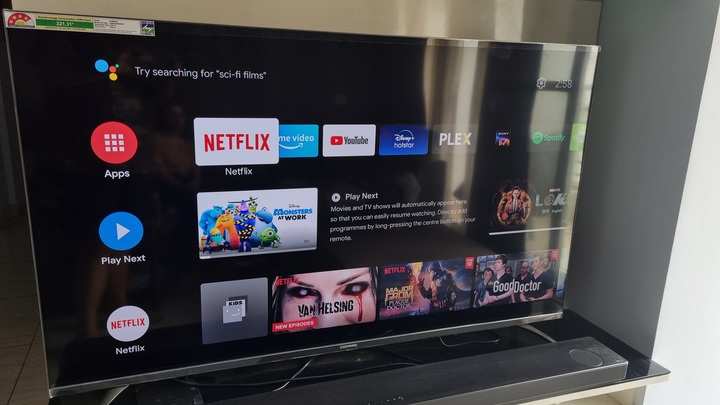
Times Square had a memorable New Years Eve in 1990. The broadcast source was WJW-TV8 in Cleveland. The date/time stamp was generated by WJW-TV8's Sony SL-HF1000 Betamax. The guests included Dinah and her grandfather, Rick, Simon, and Jessie.
Dick Clark hosted
Dick Clark hosted New Years Eve from 1972 until 1999, before stepping down. After returning to the show three times more between 2001 and 2004, the legendary TV host suffered a stroke a few weeks before the final live broadcast. Ryan Seacrest is now the show's host. Other co-hosts have joined him over the years. Clark first came up with the idea of the show while reading an IB Times article.

Dick Clark's New Year’s Eve Rockin’ Eve has been a year-round tradition. It has become an American tradition for ringing in the New Year and features music from all genres. It will mark its 50th anniversary and will feature Ryan Seacrest as host and Liza Koshy, the show's co-hosts. Journey, L.L. Cool J and Karol.
Dinah's relationship and grandfather
Dinah's book is about her growing interest in traveling and watching the women. She daydreams while the women prepare meals by the river. She also floats through the river with Judah. Zilpah calls her "child water" and says that she will only be happy if she lives by the river. She meets Jacob's wives on the way and he teaches them to care for women.
Dinah on a ski trip
Dinah Shore, an American television personality, hosted two talk shows on daytime between 1970 and 1980. Dinah's Place aired on NBC at 10:00 ET. Her second show, Dinah and Friends, was broadcast in syndication. It was a show that focused on guests and featured many big-name celebrities. Shore's guests included Lucille Ball, Bob Hope, James Stewart, and lifestyle guru Dr. Wayne Dyer.

Jessie, Simon, and Rick's relationship with their grandfather
The second half centers on Rick, Simon and Jessie’s relationship with grandparents. The brothers have been living with their grandparents since they were children, but this year, they get a new grandfather. Elson Eugene Mann (58), was born in Chester. He had many challenges in his life, but he was always eager to help others. He was born with a disability but he refused to give up on his fight for it. Joetta Mann, and Jessie Perkins, are his two sisters.
FAQ
TV is good for business.
Yes, TV can be a great tool for businesses. It helps businesses reach more customers.
For example, when you sell your house, you put up signs all over town. You also advertise in local papers, such as the newspaper, the real estate section, and the classifieds.
You can even advertise online through websites or social media sites like Facebook.
You don't need to worry about posting messages, creating articles or putting up signs on TV.
Instead, you can relax and let someone else do all the work.
This way you can get the best results without spending a lot of money on marketing campaigns.
What is a TV spot?
A TV spot (usually 30 seconds) is an advertisement that is shown between the programming segments of a television channel.
Most channels will run several TV spots per day. Each TV spot usually focuses on one topic or theme. It is often used to promote a brand or company.
TV commercials may not only promote products or services; they can also be used by charities and events to market movies and music videos.
What is TV Advertising?
Advertising on television is a great way to reach customers who are watching TV. It is also very economical. Commercial breaks are the most popular form of television advertising. These typically last 30 seconds. However, they may be longer if there are special events such as sporting matches, awards ceremonies, or elections. Commercials are often sponsored by companies who want to promote their products or services. These companies pay for the airtime. Some commercials include product information while others only show images or music. In addition to this, many programs now have 'product placement' where brands appear within the program itself. This might involve the brand being featured in a scene or providing background information on the product.
Advertisers do they spend a lot of cash on TV?
Advertisers spend large sums of money on TV to promote their products. They also spend a lot of money trying to convince consumers to buy their products.
This is done by investing money in research to discover what people love and don't like about their products.
Advertisers then use this information to design advertisements that appeal to consumers.
Are television commercials targeted?
It is important to understand what people are doing at the moment you're viewing an advertisement.
This means that if you want your message to reach people who watch football on Sunday afternoons then advertise during football games. You can reach people who watch movies on Friday night by advertising during movie times.
Advertise during prime-time programs if you want to reach people while they're having dinner.
Knowing what people do to your ads is key. Access to data on what programs they're viewing is key.
The advent of new technologies like streaming video and DVRs makes data increasingly accessible.
Keep in mind that each person is different. It's impossible, therefore, to predict which program someone will view next.
You should test different ads. Based on real-world feedback, you'll discover which type of ads works best.
Advertising on television is effective?
A message that resonates with your target market is the most important thing an advertiser can do. Television advertising is cost-effective compared to other media such as radio and print ads. However, TV advertising does not always produce results because people are bombarded by too many messages at once.
One study found that viewers can only remember two commercials from three different spots simultaneously. This shows how difficult is it to make lasting impressions with just one commercial.
Multimedia communication is the best way of getting your message across. For example, if you're trying to promote a product for helping people lose weight then advertise in magazines and newspapers along with on television.
This will enable you to reach more people and increase awareness about the products.
What is the type of advertising on a TV?
Television is a communication medium where images are used for messages. It is the most watched medium in the entire world. The television industry is worth approximately $100 billion every year.
There are many different types of advertisements on television, and they can be divided into two categories:
-
Commercials (also known as "TV commercials"), which are usually 30 seconds or longer;
-
Programming/Series is also known as "programming". These are usually 20 minutes long, but some programs may be shorter than this.
Commercials are shown during commercial breaks which usually occur between every 30 minutes and every 60 minutes of programming. Sometimes, they are shown even when no programming is being broadcast. This includes infomercials (public service announcements), before and afterwards shows, and so on.
Programs are the main part of any channel. Many channels air several series each week. Some networks only air one series per days. Others may show several series simultaneously. Some channels are specialized in showing movies, sports events, and news.
Television advertising has seen a lot of changes since its conception. Television was used mainly for entertainment purposes in the 1950s. People would watch I Love Lucy or Father Knows Best shows, then head outside to play and have fun with their friends. With the advancement of technology, television became more popular as a way to obtain information about products or services. To buy a new car, someone could simply watch an advertisement to see the features available.
Statistics
- Video-ad views on OTT (over-the-top) devices grew 63% year over year in Q3 2016, and the trend is expected to continue, further crippling traditional TV advertising. (clearcode.cc)
- In fact, when the ad first launched, Dos Equis quickly became one of the fastest-growing beers, increasing its sales by over 22%. (qualitylogoproducts.com)
- With OTT ad revenue set to increase from 45% to 60% over the next decade, AdTech pioneers and early adopters of OTT advertising will reap its benefits in the near future. (clearcode.cc)
- Radio is extremely accessible – 95 percent of cars have radios, and 99 percent of homes have radios. (marketingevolution.com)
- To get estimated costs for airing a 60-second TV commercial in different regional markets, check out the following figures in this TV ad pricing chart from the media experts at Casual Precision. (fitsmallbusiness.com)
External Links
How To
How can I make a TV commercial profitable?
Through a variety of channels, you can make money through your TV commercial. Here are some of the ways you can make money from your TV commercials:
Advertising - A paid promotion encouraging viewers to view your commercial.
After viewing your commercial, Merchandising is the selling of merchandise that has a connection to your product.
Licensing: This is when you license your commercial so other businesses can use it for their own promotions.
Syndication - This refers to syndicating your commercial to other networks.
Advertising revenue can help pay for production costs and can also provide additional funding for future projects.
It is important to remember that advertising can generate substantial income, but it doesn't guarantee a return.
First, determine the type of advertising you are interested in before you start making money on your TV commercial. Then, you should learn more about each option before choosing one.
Next, think about where you would like your commercial placed. Do you wish to advertise on popular shows like sitcoms and sports games? Maybe you want to reach younger audiences by placing your advertisement near children's television shows.
You must decide whether you would like to create your own commercial or buy one from someone else. A professional will be able to help you write, direct and edit your commercial. You can save time and money by purchasing pre-made commercials.
After deciding how you want to go about creating your commercial, you should start looking into different options. Consider these things when choosing an advertising channel.
Target Audience – This is the most popular way to advertise. You could advertise to children, teens, young adults or women over 50.
It's important to choose the right audience for you commercial. You don't want your advertising dollars to go to people who won't be interested in your product.
The location - Consider the likelihood that your advertisement will be seen by as many people as possible when you are deciding where to place your commercial. For example, if your advertisement is to be seen during a sporting event you might place it at the beginning. This will ensure that everyone who attends the event sees your commercial.
However, it may be necessary to find other ways to reach people if you are trying to reach people that live far from your home. For a wider audience, satellite dishes and cable television can be used to broadcast your commercial.
Production Costs - Most companies spend between $5,000 and $10,000 per minute of commercial airtime. They charge advertisers a fee depending on the length of the spot.
For example, if a company wants to run 30 seconds of commercial airtime, it will typically charge $1,500. For 60 seconds they'll be charged $2,500.
A commercial can cost anywhere from $3,000 to $15,000. You will also need to hire a writer, producer, editor and actor.
Time Frame - Another factor to consider when choosing an advertising method is the amount of time you have to complete it. If your goal for the week is to sell product, you won’t be able or able to wait until after Super Bowl to start airing commercials. Instead, you'll need to choose a method that allows you to advertise quickly.
You will need to spend a lot time and effort to create a commercial that is effective for long-term exposure.
Cost per Viewer- Finally, it is worth considering what it costs for each person to view a commercial. This is dependent on the audience size and how many views you receive.
An example: A commercial with 10,000,000 viewers will be more expensive than a one-minute commercial with just 1,000 views.
You'll need to consider all of these factors when deciding which option will work best for your situation. You can start by using the tips below once you have decided on your strategy.